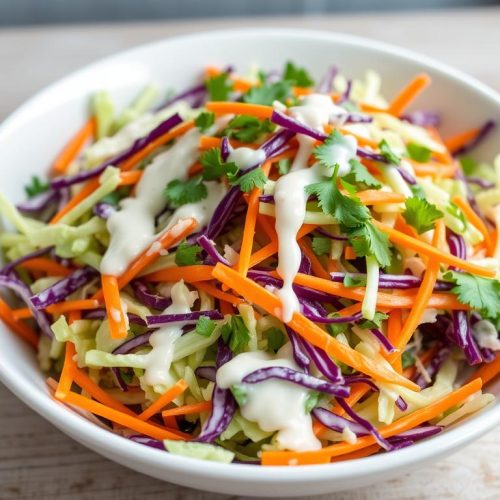When someone has ulcerative colitis, it is crucial to be careful of the things one eats and what one does not eat. Managing the good and bad features of the diets for ulcerative colitis is truly important. Ulcerative colitis is not treatable with a single diet. Keep track of all the things you eat and don’t eat to stay organized when practicing the Colitis with Ulcers Diet. To record the events, use a notebook or a smartphone phone.
When preparing a meal, remember that it needs to contain nutritious grains, vegetables that are in season, and a high-protein diet. It is important to stay away from foods that may improve symptoms. Some simple dietary adjustments for ulcerative colitis affect cooking vegetables and eating low-fat dairy. Some medical professionals recommend a low-fiber diet, i.e. eating 10 to 15 grams of fibre per day, since it will help someone go to the loo less often.
A person may identify what kinds of food are suitable for their health with the support of a nutritionist and doctor. Remind them of the symptoms experienced after eating particular foods. When it comes to an individual’s dietary requirements and choices, they’re particularly prepared to help them.
A person may need to take vitamins such as whey, calcium medication, folic acid, and B12 vitamins if they are unable to follow a healthy eating plan. Yet, before starting any of these dietary supplements, always speak with your doctor. Some individuals might discover it helpful to eat up to six smaller meals compared to two or three big ones.
We develop a customized diet plan for those suffering from Ulcerative Colitis. We have included foods that may help reduce ulcerative colitis in this dietary regimen. For patients with ulcerative colitis, we design an extensive diet plan. We have also provided a meal plan that includes meals at all three times for the entire diet.
After speaking with professional dietitians, the following nutritious meal ideas have been chosen: Additionally, strive to stay away from the substances listed in the Ulcerative Colitis diet plan. People with ulcerative colitis have to change their daily routines in order to follow this Indian diet plan.
We’ve created a sample 7-day ulcerative colitis diet plan that may help reduce symptoms of UC and flare-ups. Simply click the link below to access the printable PDF:
Free Download
The amount of calories consumed each day from the meal plan indicated is around 2,000. It contains a lot of the best foods for people with ulcerative colitis, but it also stays away from foods that may trigger flare-ups.
The UC diet plan PDF described above is simply an example; the best diet for you will depend on your specific situation. As usual, before beginning a diet that is unfamiliar, it’s important to speak with your doctor, dietitian, or other healthcare professional.
To make sure you are eating the right foods, if you don’t already have one, you might want to consider working with a dietitian who specializes in IBD.
Diet Chart For Ulcerative Colitis
Here is a 7-day meal plan for people managing ulcerative colitis:
Day 1:
- Breakfast:
Oatmeal, almond milk, slices of banana, and a pinch of cinnamon
- Snack:
Fresh fruit salad made with banana, papaya, and an apple
- Lunch:
Moong dal khichdi is a steamed dish that includes vegetables like green beans, carrots, and zucchini.
- Snack:
Roasted chana dal roasted with spice powder and salt.
- Dinner:
Palak paneer served with brown rice and a serving of raita made from cucumber
Day 2:
- Breakfast:
Two idli with coconut chutney and Sambar.
- Snack:
Roasted peanuts, sprinkled with of powdered salt.
- Lunch:
Vegetable pulao served with an accompaniment of a raita made from mixed vegetables.
- Snack:
Fresh fruit like the pear or peach.
- Dinner:
a mixture of curry vegetables with roti and a side dish of mixed vegetables salad.
Day 3:
- Breakfast:
Masala omelette served with whole wheat bread and a serving of tomato Chutney.
- Snack:
A roasted chana dal is served with a pinch of salt powder.
- Lunch:
Dal makhani is accompanied by brown rice and a side of mixed vegetable salad.
- Snack:
Fresh fruits, such as an apple or orange.
- Dinner:
Grilled broccoli served with sauteed veggies and a serving of raita made from cucumber
Day 4:
- Breakfast:
Poha, served with fresh fruit.
- Snack:
Roasted peanuts are topped with a dusting of cumin and salt.
- Lunch:
Vegetable biryani is served with an accompanying mix of vegetables, raita.
- Snack:
Fresh fruit, such as mango or a banana.
- Dinner:
The chickpea curry (choley) served with brown rice and a side of mixed vegetables.
Day 5:
- Breakfast:
Upma with fresh fruit and a side
- Snack:
Roasted chana daal with a pinch of salt
- Lunch:
Vegetable curry, brown rice, and a side of raita mix vegetables.
- Snack:
Fresh fruit like an apple.
- Dinner:
Grilled toast, steamed veggies, and an accompanying cucumber raita
Day 6:
- Breakfast:
Straight Dosa is made with coconut-based chutney and Sambar.
- Snack:
Peanuts that have been roasted with a pinch of sea salt as well as cumin powder
- Lunch:
cooked Rajma served with brown rice along with a side dish of mixed vegetable salad.
- Snack:
Fresh fruit like an orange or a banana.
- Dinner:
Fish curry served with brown rice and a side of raita made from mixed vegetables
Day 7:
- Breakfast:
Besan chilla, served with an accompanying tomato chutney
- Snack:
A roasted chana dal is served with a sprinkling of powdered salt.
- Lunch:
Paneer curry served with brown rice as well as an accompanying mixed vegetable salad.
- Snack:
Fresh fruit, such as a pear.
- Dinner:
Cooked zucchini, two rotis and a serving of raita mix with mixed vegetables
FREQUENTLY ASK QUESTIONS (FAQs)
1. What is the best diet for ulcerative colitis?
The ideal food regimen for people suffering from ulcerative colitis will vary from person to person as the disease is different for everyone. However, a few general recommendations have been recognized by a variety of health experts and organizations.
As per the Crohn’s and Colitis Foundation, foods to add to your diet are fruits like raspberries, bananas, applesauce, and blended fruits. The vegetables you consume, like squashes and cooked carrots that are fork-tender, as well as green beans, are also beneficial.
It is suggested that the NHS recommends eating a diet with low levels of residue, which includes white bread as well as processed (non-wholegrain) morning cereals such as white rice, cornflakes, and refined (low-fibre) pasta and noodles. These are foods that are easy to digest and can reduce symptoms.
The foods to avoid, according WebMD, include WebMD includes dried legumes, beans, peas, dried fruits, and foods that contain sulfur or sulfate. Other foods include those rich in fibre, animals, and nuts.
Healthline suggests including foods that are rich in fiber such as beans, oats, and nuts, as well as healthy fats like olive oil and nutseeds, as well as seed butter and protein sources such as lean fish and lean meats, in your diet.
A Mediterranean diet that includes plenty of fresh vegetables and fruits is suggested by Harvard Health.
It is important to remember that each body responds differently to different kinds of food. What works for one individual will not work for another. It’s suggested to keep a food journal to keep track of what foods may cause symptoms. Always consult a healthcare doctor or dietitian prior to making any major modifications to your food habits.
2. How can diet cure ulcerative colitis?
While there isn’t an indefinite diet solution for ulcerative colitis, some dietary adjustments can help control symptoms and prevent flare-ups. Since anyone is affected by the illness differently, it’s essential to keep in mind that what works for one individual might not be effective for another.
The NHS suggests that immediately following a low-residue or low-fibre diet may help reduce colitis and ulcer symptoms during a flare-up. White bread, refined pasta, white rice, and refined cereals are components of these types of diets.
According to WebMD, certain nutrients might be helpful to combat the inflammation and sensitivity that UC causes within your digestive system. These are anti-oxidants that can be discovered in fruits and vegetables, and omega-3 fatty acids that can be discovered in salmon and flax.
According to Healthline, certain individuals may find that putting a plan in place makes it easier to manage their symptoms. This might involve eating fewer, more frequent meals, identifying and steering clear of trigger foods, or making sure that your diet is balanced.
Although there is no known cure for ulcerative colitis, certain foods can make symptoms more severe, according to Everyday Health. So it’s critical to recognise and control your specific dietary triggers.
Increased consumption of specific vegetables and fruits, such as squash, boiled carrots that are fork-tender, Brussels sprouts, and raspberries, as well as blended fruit, has been suggested by the Crohn’s disease and Colitis Foundation.
The Mayo Clinic suggests staying away from seeds, nuts, corn, and popcorn, along with potentially avoiding raw fruits and vegetables, to see if that helps with symptoms.
As always, it’s recommended to speak to a healthcare professional or dietitian before making any big changes to your diet. They can offer specific advice based on your specific needs and current health.
3. Who is at high risk for ulcerative colitis?
Based on studies, it has been proven that people who are more prone for stress and eating spicy foods and drinking excessive coffee and tea, dependent on smoking and drinking alcohol and genetics as well as those who are ageing are more susceptible to ulcerative colitis. Additionally, ulcerative colitis is an autoimmune condition that could alter the stomach lining, which can cause inflammation, pain, and cramps after eating and moving.
4. How do I treat Ulcerative colitis?
It is vital to maintain an active and healthy lifestyle through an adequate diet and proper fluids that allow for the healing process of ulcers. Consuming a diet of soft mushy and well-cooked food items is recommended for gut healing. It is also important to manage the medicines you purchase over the counter on your own. Make sure you consume iron regularly and nutrient-rich food to ensure your body to be healthy.
5. Which is the most important reason for ulcerative colitis?
The most common reason for ulcerative colitis is autoimmunity. When your immune system takes for a spin the system could go on and damage the healthy cells of your body, causing swelling and ulceration on the stomach the lining that causes indigestion as well as problems with digestion.



